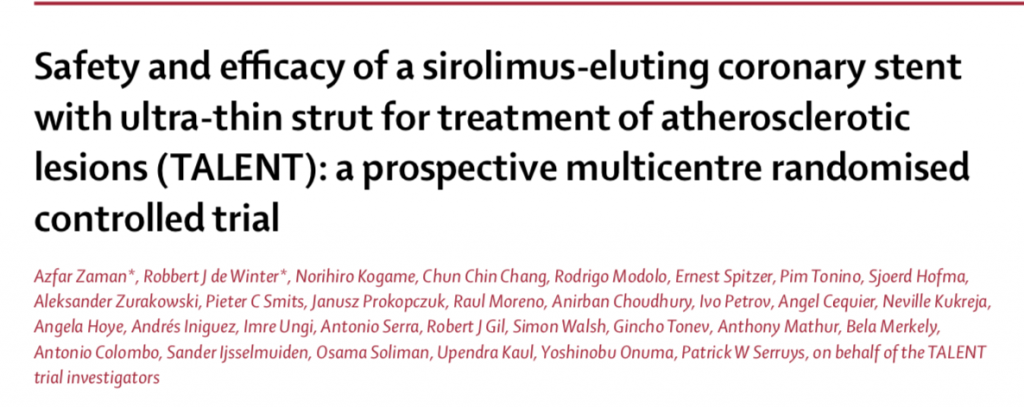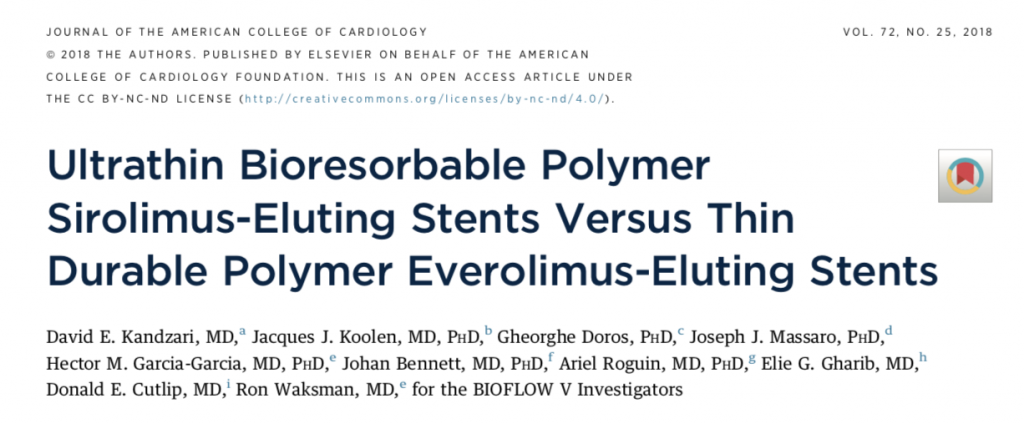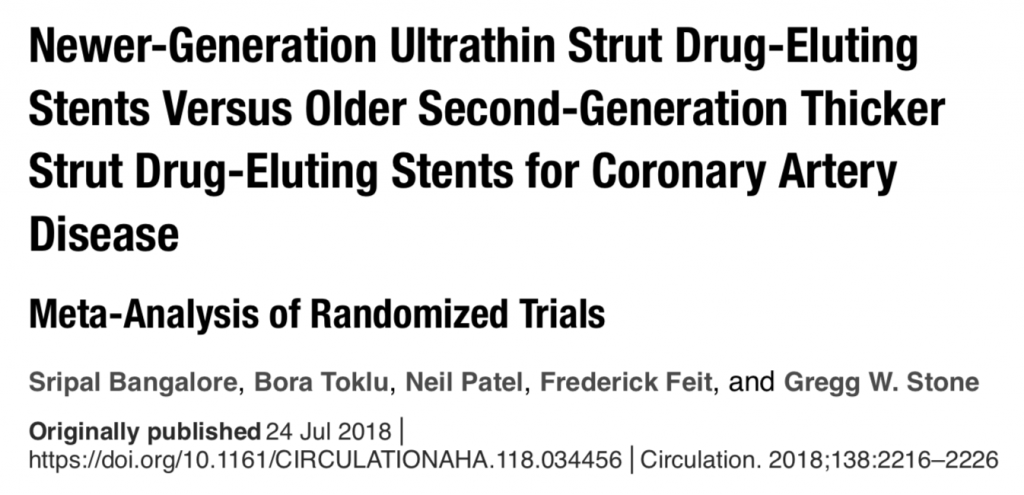
The introduction of first generation drugs eluting stents ( 1G- DES) sub substantially reduced rates of in stent restenosis (ISR) as seen with bare metal stents (BMS). Bare metal stents had significantly cut down plain balloon angioplasty complications such as emergency coronary artery bypass grafting surgery and restensis, but were associated with stent thrombosis (ST). ST is a dreaded complication of coronary stenting that apart from killing a patient, invariably results in a large myocardial infarction. Improved anti platelet therapy in the form of dual anti platelet therapy (DAPT) and improved stent technology with better implantation techniques did reduce early ST events (less than 30 days). In stent restenosis with BMS was due to neo intimal hyperplasia, and this pathological phenomenon paved way for the entry of the IG-DES. The IG-DES significantly reduced in stent restenosis but became associated with late ST (30 days to 1 year), and with very late ST (later than 1 year) ST. Late ST necessitated development pf more powerful anti platelet medication, administered for prolonged duration, which in turn brought in the spectre of increased bleeding.
Delay in re-endotheliazation is considered the primary substrate for late and very late ST. Optical coherence tomography (OCT) has revealed that stent malapposition and rupture of a neoatherosclerotic plaque are nearly always associated with late and very late stent thrombosis. In a few cases uncovered struts are the cause. Delayed re-endotheliazation is due to the anti proliferative effect of the drugs released by the 1G-DES.
Another phenomenon to explain late ST was a chronic inflammatory reaction induced by the polymer attached to the stent struts, and even the stent struts themselves. The stent itself essentially has 3 components, the metallic platform, the polymer (drug carrier) and the pharmacological agent.
Second generation DES (2G-DES) performed better than 1G-DES. The most studied 2G-DES is the everolimus eluting stent made of cobalt-chromium, better known as the ‘Xience’ stent. A meta-analysis of the 2 largest everolimus eluting stent found that the everolimus eluting stent significantly reduced ST and target vessel revasularization.
The next development in stent technology has introduced biodegradable polymer (BP) DES that ensure the polymer dissolves subsequent to release of the anti proliferative drug, hence removing a stimulus for chronic inflammation/hypersensitivity. Chronic inflammation/hypersensitivity results in neointimal proliferation and neoatherosclerosis, which then becomes a substrate for late stent thrombosis. Hence it makes sense to develop stents with biodegradable polymer that melts away after drug release.
The next logical development was to make third generation drug elution stents (3G-DES). The 3G-DES came with biocompatible or biodegradable polymers, different stent platforms and different drug release formulation. The net result was decrease in ISR, ST, DAPT duration and also risk of bleeding. Also, crucially, drug eluting stents with ultra-thin strut thickness ( < 70 microns) have been developed to do away with the limitations of 2G-DES that have thicker struts (80 microns or more). In fact a meta analysis of 10 randomised trials (11,658 patients) reported that DES with ultra-thin struts were associated with a 16% relative risk reduction in composite end point when compared with 2G-DES. The benefit of the 3G-DES was largely driven by reduction in myocardial infarction. The researchers of the meta analysis concluded that newer generation ultra thin strut DES further improve 1 year clinical outcomes in comparison with contemporary thicker strut 2G-DES. The ultrathin strut DES were also associated with lower rates of stent thrombosis ( relative risk,0.72).
The TALENT trial ( Lancet 2019; 393:987-997) has compared an ultrathin strut DES, SUPRAFLEX (strut thickness 60 microns) with the Xience stent (81 microns), in a randomised manner in 1435 patients European population. The Suprafelx stent is a sirolimus eluting stent with a biodegradable polymer.The Supraflex stent was non inferior to Xience stent for a device oriented composite endpoint (cardiac death, target vessel myocardial infarction, and target vessel revasularization at one year ( 4.9% Supraflex versus 5.3% Xience).
However device success with the ultrathin strut stent was significantly less than with the Xience stent (97.6% vs. 99.5%; p=0.0003), indicating poorer deliverability with the Supraflex stent. Deliverabilty is an extremely important characteristic required of a stent, especially in a complex coronary anatomy. Also all cause death was higher with the ultrathin strut stent (2% vs 0.6%, p=0.019), but this may have been due to chance, as the trial was not powered to assess mortality.Importantly the incidence of target vessel revascularization was significantly lower in the ultrathin strut tent group than in the Xience cohort (1.2% vs 3.1%; p=0.021). The last bit of data must be greeted with caution, because it may be possible that the Xience stent because of better deliverability was being used in more complex lesions, resulting in higher rate of instant stenosis.
The researchers of the TALENT trial concluded that the ultrthin strut stent was non inferior to the Xience stent for composite clinical endpoint at 12 months; hence the Supraflex stent seems a safe and effective alternative drug eluting stent to other stents in clinical practice. The sirolimus eluting coronary with biodegradable polymer Supraflex coronary stent has the same strut thickness (60 microns) regardless of the diameter (2.00 mm to 4.50 mm). Also drug release with the Supraflex stent is completed in 48 days with a burst elution of almost 70% in the first week itself. The polymer is biiodegraded and resorbed within 3 months, with a sirolimus reservoir in the vessel wall lasting 270 days. The researchers put up the interesting point that thin struts unlike thick struts do not cause protrusions into the vessel lumen that create turbulence, which in turn activate platelet adhesion.
Obviously more longer duration studies with ultrathin strut stents are needed to fully appreciate clinical significance compared to currently available 2G-drug eluting stents. Also clinical efficacy of newer drug eluting stents are reaching a plateau, there is minimal incremental advantage; this may put the Supraflex ultrathin strut stent manufactured in India at a commercial advantage, especially for the patient. The TALENT trial was supported by manufacturing company.

